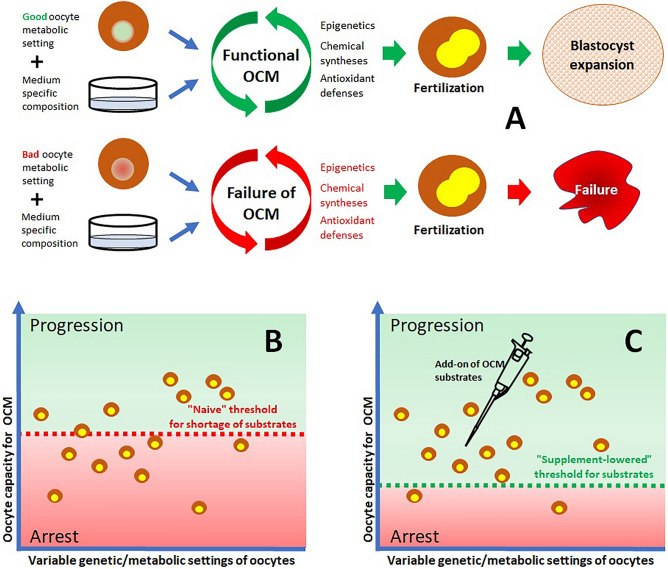Figure 8.
The one carbon metabolism (OCM) checkpoint. (A) Each maturing oocyte has its own, genetically determined, capacity to process the OCM substrates. In in vitro conditions the variety and amounts of substrates available to run the OCM is the one provided by the culture medium, and it may not fit with the need of some oocytes. Oocytes well-fitting with their medium will achieve maturation, fertilization and, thereafter, blastocyst expansion. Oocytes with a bad fit with the medium will suffer a deficit of function of the OCM and, although able to mature and to get fertilized, will fail the full development to blastocyst. (B) Out of a cohort of oocytes undergoing IVC, some of them will have good ability to process OCM substrates, other will need larger amounts. The specific threshold of different oocytes is reported by their position with respect to the vertical axis. Any oocyte positioned above the available concentration of substrates (dotted line, green background area) will be able to run the OCM and to progress. All those below the dotted line (red background area) are predicted to fail to expand to blastocyst after fertilization. (C) The maturing environment (culture medium or in vivo) of the same cohort of oocytes has been supplemented with due amounts of the OCM substrates. Even if the intrinsic metabolic capacity of the oocytes remains the same, the supplementation of OCM substrates lifts-up their concentration, which allows more of oocytes to fall within the progression area and to expand to blastocyst once fertilized.

